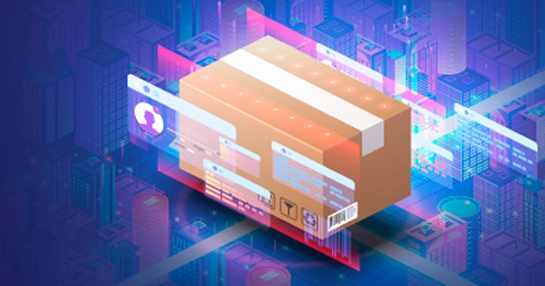-
GEP Software
-
- Procurement Software
- Direct Procurement Software
- Indirect Procurement Software
- Unified Source-to-Pay
- Source-To-Contract Software
- Procure-to-Pay
- Midsize & High Growth Enterprises
- Key Capabilities
- Spend Analysis
- Sourcing
- Contract Lifecycle Management
- Supplier Lifecycle Management
- Third-Party Risk Management
- Purchasing
- Payments
- Data Analytics and Reporting
- Do more with GEP SMART
- Intake Management & Orchestration
- Intelligent Category Management
- Tail Spend Management
- Cost Data & Analytics (GEP COSTDRIVERS)
- AI-First Supply Chain Management
- Supply Chain Visibility and Execution
- Logistics Visibility
- Inventory and Warehouse Management
- GEP Multienterprise Collaboration Network
- Supply Chain Control Tower
- Field Services
- Supply Chain Collaboration & Planning
- Supply Chain Planning
- Purchase Order Collaboration
- Forecast Collaboration
- Capacity Collaboration
- Quality Management Software
- Should-Cost Modeling
- Direct Material Sourcing
-
-
GEP Strategy
-
GEP Strategy
Unrivaled supply chain and procurement expertise + the transformative power of AI
Supply Chain Consulting
- Environmental, Social and Governance
- Sustainability Consulting Services
- Socially Responsible Sourcing
- Scope 3
- Demand and Supply Chain Planning
- Collaborative Planning
- Source To Contract
- Procure To Pay
- Inventory Strategy & Management
- Operations & Manufacturing Excellence
- GEP Total Inventory Management Solution
- Network Strategy & Optimization
- Warehousing & Transportation Management
-
-
GEP Managed Services
-
GEP Managed Services
World-class skills, experience and know-how — amplified by the power of AI
-


The Real AI Battleground
Supply Chains, Not Just Algorithms
AI isn’t just about algorithms and models—it’s about the physical systems that power them.
This episode looks past the hype to reveal the real foundation of AI success: supply chain infrastructure. From chip availability and power constraints to data center capacity and telecom networks, the conversation explores how the future of AI depends on mastering the material world behind the digital one.
Drawing on real-world examples, the podcast highlights why organizations leading in AI are also investing heavily in infrastructure, energy, and supply chain resilience.
What You’ll Hear:
- The six critical infrastructure levers—data centers, chips, power, and more—that determine whether AI can truly scale
- How leading companies are building vertically integrated AI supply chains to control risk and performance
- Why the next generation of AI leadership will come from procurement, engineering, and operations—not just data science
Listen now to discover how mastering supply chain foundations will define the next era of AI leadership.
This is a audio recording of a recent podcast.
PODCAST SUMMARY
1. Beyond the Hype: Why AI Is Really About Infrastructure
This episode dives deeper than the usual AI buzz, urging procurement and supply chain leaders to look beyond algorithms and consider the physical infrastructure powering AI.
While AI models and talent get most of the attention, the real differentiator today is the supply chain beneath the technology.
The hosts point to recent industry examples, like Microsoft’s paused data center projects due to chip shortages and power constraints. Even Nvidia’s GPUs were in short supply earlier this year. These challenges show how even the most advanced models are limited without the right physical support system. In response, major players are not just building better AI—they’re developing their own chips, redesigning data centers, and securing their supply chains end to end. The conversation makes one thing clear: If you want to lead in AI, you need to control the real-world systems that keep it running.
2. The Six Supply Chain Levers That Make or Break AI
The podcast lays out six critical infrastructure areas that AI-ready organizations must master. These aren't abstract tech ideas; they’re physical, operational elements that determine whether AI can scale effectively or not.
1. Data Center Construction
Building data centers for AI isn’t about throwing up a warehouse. It involves navigating zoning laws, grid capacity, and environmental regulations. Site selection becomes a serious bottleneck—and a strategic one.
2. Infrastructure Equipment
Once the building is ready, it’s about what goes inside. This includes specialized power systems, cooling infrastructure, and security—both physical and digital. It’s not just about buying servers; it’s about creating a tailored environment for continuous, high-performance AI workloads.
3. Compute Hardware
AI chips don’t work in isolation. They need a tightly integrated ecosystem of CPUs, memory, storage, and networking gear. Global supply chain disruptions make this one of the hardest and most expensive elements to scale.
4. Power Generation
AI demands immense energy. Forecasts suggest that power consumption by AI data centers could double by 2026. That’s leading to massive investments in renewables, grid upgrades, and even experimental technologies like nuclear fusion to ensure sustainable energy availability.
5. Real Estate
Strategic land acquisition is now a tech priority. Companies are picking sites based on access to clean energy, favorable climates for cooling, and proximity to end-users to reduce latency. It's location strategy—but with a digital edge.
6. Telecom Infrastructure
AI systems move vast amounts of data, and they need fiber-optic networks, 5G, and undersea cables to do it efficiently. Companies are investing heavily in building out low-latency, high-bandwidth infrastructure to keep up with AI’s data demands.
Together, these six areas form the real foundation of AI leadership—a foundation that’s easy to overlook but impossible to ignore if you want to scale AI successful.
3. The Supply Chain Mandate for AI Success
The message is simple but profound: Infrastructure is the new strategy. Those leading the AI charge in the next few years won’t just be the ones with brilliant models—they’ll be the ones who know how to secure the land, power, chips, and networks needed to run those models at scale.
This shift redefines what tech leadership actually means. It’s no longer just about innovation in code—it’s about physical execution, procurement, and strategic supply chain mastery. AI doesn’t just need data scientists—it needs planners, engineers, and operations experts who understand the material world behind the virtual one.
If you’re in supply chain or procurement, now’s the time to step forward. AI leadership will belong to those who can connect the digital and physical dots, anticipate infrastructure needs, and build resilient systems from the ground up.
TO LISTEN, Please Enter your EMAIL
JUST A FEW MORE THINGS ABOUT YOU









